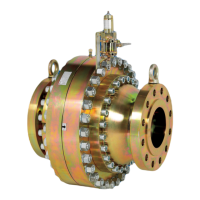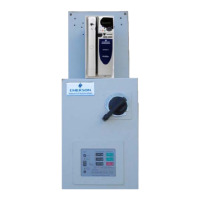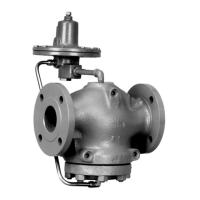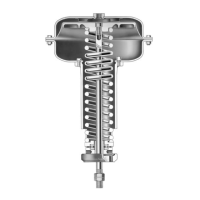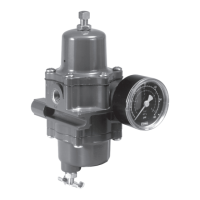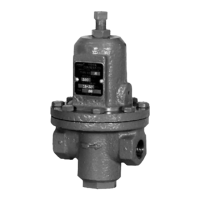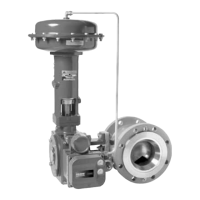S600+ Instruction Manual
Revised July-2017 Glossary A-3
Data Concentrator Unit. Used to connect one device (such as a printer) to multiple
S600s. Control of the shared device is determined by the hardware handshaking lines
of the RS-232 port.
Transducer used to measure the density of the product at current conditions in the
pipework where it is mounted.
Digital input, as known as DIGIN.
A signal with only two states, such as on/off, input/output, or 5V/0V.
Deutsches Institut fur Normung. German Standard.
Used to check the difference between a measured variable and a preset value. For
example, if Flow Discrepancy was selected during the generation phase, the S600
would check the current uncorrected volume flow rate against the proved uncorrected
volume flow rate. If the discrepancy exceeded the preset limit, the S600 would raise an
alarm indicating that a prove was required.
Note: This example is only applicable to a liquid turbine configuration.
Daniel Metering Supervisory. The DMS consists of a server performing the supervisory
calculations, controls, and reporting and one or more workstations providing the
human-machine interface. The workstations are connected to the server via a LAN
using TCP/IP protocol and are normally designed around Windows NT or Unix and
Oracle development software.
Digital output, also known as DIGOUT.
Dual Pulse Receiver or turbine input.
Dynamic Random-Access Memory. Volatile storage memory used in the S600. When
power is removed from the S600, the contents of the DRAM memory are lost.
Daniel Ultrasonic Interface. This Windows-based package superseded the Daniel VWI
package for communicating with an ultrasonic meter. The S600 can be set to
communicate with an ultrasonic meter and also pass the DUI communications through
to the meter.
Dual-Variable Sensor. A device that provides static and differential pressure inputs to a
ROC.
Mathematical notation where the mantissa is any number greater than –10 and less
than 10 and the exponent is the multiplier.
Electrically Erasable Programmable Read Only Memory, a non-volatile memory chip
which may be erased and reprogrammed electronically.
A 10- or 100-megabit-per-second (Mbps) baseband-type network that uses the
contention-based CMSA/CD media access method. Invented by Robert Metcalf at
Xerox’s Palo Alto Research Center in the mid-1970s.
Non-volatile storage memory. Although slower to access than SRAM and DRAM, once
programmed flash memory retains the data and requires no further support. In the
S600, configuration files and the operating system are typically stored in flash memory.
Write protect jumpers are used to prevent accidental programming of flash memory.
Used to balance the flow through a liquid system so a required flow rate can be
attained through a prover.
This option allows the station within the S600 to control the number of streams open
according to the current flow rates. If flow switching is required it should be enabled on
all relevant streams and on the station settings during the generation phase.

